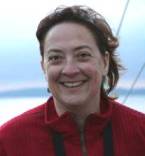I am eagerly anticipating an event at the White House this afternoon; I am headed over for the official announcement of the Final Recommendations of the Interagency Ocean Policy Task Force. I hear that the President will sign an Executive Order to implement the recommendations later this week and create a new National Ocean Council. Once that’s done we will have a new policy to protect our oceans while making use of their abundant resources, and the structural changes in the government designed to make that policy a reality.
Some will probably look at this as a government re-organization, and ask, “When do those re-organizations matter?” You might be tempted to answer “never”, but that’s not true. When President Nixon created the Environmental Protection Agency the result was cleaner air to breathe, cleaner water to drink and greater safety from toxic pollution for everyone in this country. None of those results happened overnight—some of them even took decades.
Today’s announcement by President Obama’s advisors could have the same positive impact on our oceans as Nixon’s EPA announcement had on our health and environment. And like getting cleaner air and water, much of the work Obama has laid out for the oceans will take decades. The leaders of this effort—especially CEQ Chair Nancy Sutley, Drs. Jane Lubchenco and John Holdren—will be able to look back decades from now and take credit for an important turning point for the oceans.
Because of their vision, the new National Ocean Council will take on the biggest problems our oceans face: how do oceans and coastal communities adapt to climate change? How do we restore ecosystems so that the oceans are healthy and produce healthy seafood? How do we address practices on land that are polluting the oceans, creating vast dead zones? How do we protect the fragile Arctic from the ravages of climate change?
I hope you are as eager as I am to see progress—I want these problems solved tomorrow. But solving big problems right takes longer than that, so I applaud the Administration for taking the time to get the science right, and for creating a place at the table for important stakeholders like commercial and recreational fishermen and native communities. The plans announced today mean every region of our oceans will finally get an integrated, comprehensive blueprint for how to get the most out of the oceans—and make sure the oceans are healthy in long run.
When our children and grandchildren head out to catch their dinner from an abundant ocean and can take their catch home to a house powered by sustainable ocean energy, they’ll have the National Ocean Council to thank for it.
Diane Regas is VP for Oceans at the Environmental Defense Fund and was one of the original co-chairs of the Subcommittee for the Integrated Management of Ocean Resources in 2005.
Never miss a post! Subscribe to EDFish via a email or a feed reader.











 In the current issue of Science twenty-one leading ocean scientists declared a truce—it’s as if Wile E. Coyote and Roadrunner agreed to stop the chase for a day. The
In the current issue of Science twenty-one leading ocean scientists declared a truce—it’s as if Wile E. Coyote and Roadrunner agreed to stop the chase for a day. The  The latest issue of
The latest issue of